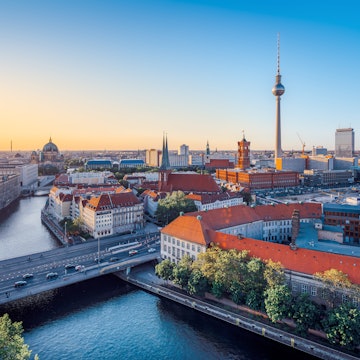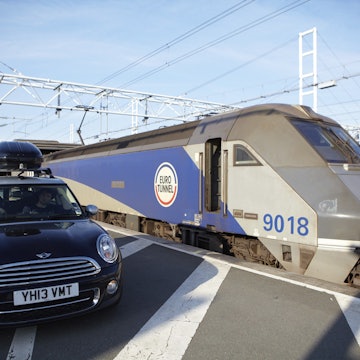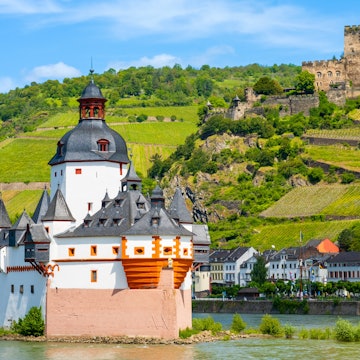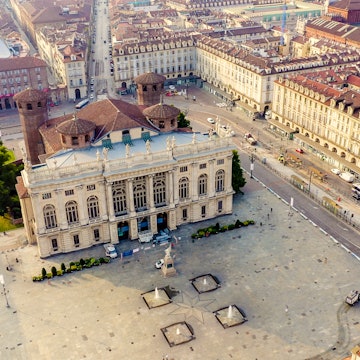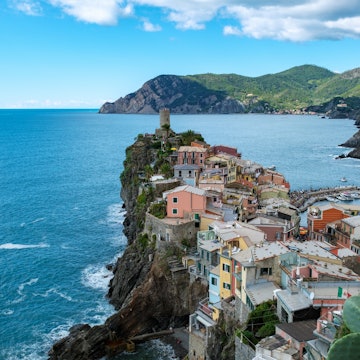

Havelské tržiště (Havel Market Square). kasakphoto/Shutterstock
Prague packs a wallop for first-time visitors. Not only is the historic architecture – Gothic spires, baroque domes and the imposing Prague Castle – every bit as arresting as advertised but there’s so much else to do and see along the way between the major sights. Pair a tour of the castle with a nip into an authentic Czech pub. Mark the hour at the Astronomical Clock in Old Town Square, then rent a paddleboat to splash around on the Vltava River. Spend an evening at a classical concert or indie show, or relax over a traditional meal of roast pork or duck, usually with a side of bread dumplings.
And Prague is an eminently manageable city. The airport and bus and train stations are within easy reach of the center. Once you’ve settled in at your hotel, just about everything in the historic core is within walking distance or reachable by public transportation. While the Czech language looks impenetrable – and it mostly is – English is widely spoken by people in regular contact with visitors. The only caveat is Prague’s popularity. At midsummer, you’ll be sharing those charming cobblestones with lots of other sightseers.
When should I go to Prague?
Most visitors converge on Prague in July and August, and for good reason. Daylight hours are long, and the days are reliably sunny. That said, the potential for a summer heat wave and the throngs of other tourists can put a damper on the fun. A better bet is to travel in spring (April and May) or autumn (September and October). Temps are cooler, and while Prague is popular year-round, you’ll have the city more to yourself. Winter (November to March) is cold and overcast, though the crowds thin to a trickle, the cafes are cozy, and hotels slash room rates. Book everything well ahead if you’re planning to travel over the New Year or Easter holidays.
How much time should I spend in Prague?
While you can cram a lot of the city's museums and free attractions into two days, three full days is ideal for getting to know Prague. Spend one day exploring the Staré Město side of the Vltava River. Dedicate the second to the sights on the Malá Strana and Prague Castle side. On the third day, push beyond the center to lively neighborhoods like Karlín, Vinohrady or Holešovice, or see the ancient hillside citadel at Vyšehrad. Prague also makes a good base for day trips to Karlštejn Castle or the former mining town of Kutná Hora and its infamous Sedlec Ossuary.
Is it easy to get in and around Prague?
Prague’s Václav Havel Airport, 15km (9 miles) from the center, is the main gateway; flights arrive here daily from all around Europe. From the airport, trolleybus 59 or a taxi will bring you to the center in about 30 minutes. Prague is located on major European train and bus lines, with daily international rail service to Budapest, Vienna and Berlin.
Once in Prague, take advantage of the city’s cheap and efficient public transportation – metro, trams and buses – to cover longer distances, or simply walk from place to place. The historic core is small. The walk from Old Town Square to Prague Castle takes about an hour at a leisurely pace. Special night trams operate in the wee hours to bring you back to your hotel after a late night out, or order a rideshare from apps like Uber or Bolt.

Top things to do in Prague
Hit the main historic sights
Even if you’re not particularly a history buff or architecture lover, make an exception for Prague. The city will take your breath away. Allocate plenty of time to amble from place to place for the full breadth of the architectural splendor. Start at Old Town Square to witness the 15th-century Astronomical Clock chime on the hour. Follow narrow cobblestone lanes out to the Gothic Charles Bridge, memorably topped with 30 baroque statues. Wind your way through medieval lanes on the Malá Strana side of the river, then walk up to Prague Castle, by some accounts the largest castle complex in the world. This is what makes the city so special.
Visit a pub
Czechia is famous for its beer. Pilsner-style pale lager was invented here, in the city of Pilsen in 1842. A night at a pub remains a quintessential Czech experience. Classic drinking rooms like U Zlatého tygra are closely guarded by regulars. Popular pubs like Vinohradský pivovar and Klášterní pivovar Strahov, not far from Prague Castle, are more tourist-friendly. Several pubs also serve excellent Czech food. Grab a table at U Kroka or Hostinec na Výtoni (for duck), or at the more upscale Červený Jelen.
Take in a concert
Prague has a long tradition of nurturing classical composers like Antonín Dvořák and Bedřich Smetana and hosting orchestras in splendid venues that perfectly match the music. Check the National Theater, Rudolfinum, State Opera and Municipal House to see schedules and buy tickets. For something more contemporary, see what’s happening at clubs like Roxy and Palác Akropolis, or simply head over to Náplavka on the Vltava riverbank, where there's always something fun and musical after dark.
See Prague’s greener side
Prague’s public parks and gardens are both a respite and a reflection of the city’s architectural heritage. The Royal Garden, north of Prague Castle, is marked with Renaissance buildings from the 16th century. The sprawling Wallenstein Garden features eye-catching late-Renaissance touches like an artificial stalactite grotto that hides grotesque faces. The Vrtbov Garden, with its curved stairways and emotive statues, is an exemplary example of a baroque garden. Walk out from the National Theater to the peaceful islands in the Vltava, or rent paddleboats from a jetty on Slav Island.

My favorite thing to do in Prague
Prague excels at open-air imbibing, and to my mind, there’s no better place to spend a warm summer evening than among friends at a beer garden. Arguably the best is at the eastern end of Letná Gardens, on a high bluff across the Vltava River north of the Staré Město. There's nothing fancy here: simply line up at a kiosk for a beer to go, settle in at a picnic table and enjoy both the beer and the views below. Riegrovy sady in Vinohrady is another favorite outdoor beer venue. At Viniční Altán in Havlíček Gardens, also in Vinohrady, sip wine at a wooden gazebo overlooking the neighborhood’s vineyards.
How much money do I need for Prague?
Prague is no longer the low-cost destination it once was, though prices for day-to-day items are still generally lower than places like Germany, France or Italy. Beer, for one, remains considerably cheaper than many other countries. Public transportation is another terrific bargain. Credit and debit cards are widely accepted.
· Double room at a top hotel: 6000Kč (US$275)
· Double room at a budget hotel: 2500Kč (US$115)
· Pint of Czech beer at a local pub: from 70Kč (US$3.20)
· Coffee at a trendy cafe: from 80Kč (US$3.70)
· Two-course lunch (without drinks): from 300Kč (US$13.75)
· Museum entry (adult): 350Kč (US$16)
· 30-minute ticket for the metro, trams and buses: 30Kč (US$1.40)
· Taxi from the airport to the center: 600Kč (US$27.50)

What should I pack for Prague?
Whatever the season, an umbrella is always a practical choice, as well as clothes that can get wet. Bring along your most comfortable walking shoes. Prague fashion runs to the casual; that said, men should pack a blazer or jacket and women a dress or nicer outfit for a fancier night out at a classical music concert or opera.
Is Prague a safe destination?
The crime rate is low, and violent crime is practically nonexistent. More common threats are things like petty theft and pickpocketing – though these too are relatively rare. Still, watch your purse or wallet in crowded areas like on a packed tram. Be careful not to fall for a few long-standing tourist scams. Don’t use private exchange booths to convert your money into Czech crowns; they often levy exorbitant conversion fees. Use bank ATMs instead. Also, never exchange money with strangers on the black market (this is always a scam).
What do I need to book in advance in Prague?
Reserve hotel rooms as far in advance as possible to get the best price. The same goes for concert tickets. Performances at the National Theater, State Opera and other venues tend to sell out, sometimes weeks in advance. Book tables at fancier restaurants a couple of days ahead. Lunch bookings tend to be easier to get than dinner. Whatever you do, don’t risk showing up without a reservation – there’s a good chance you’ll be turned away.






